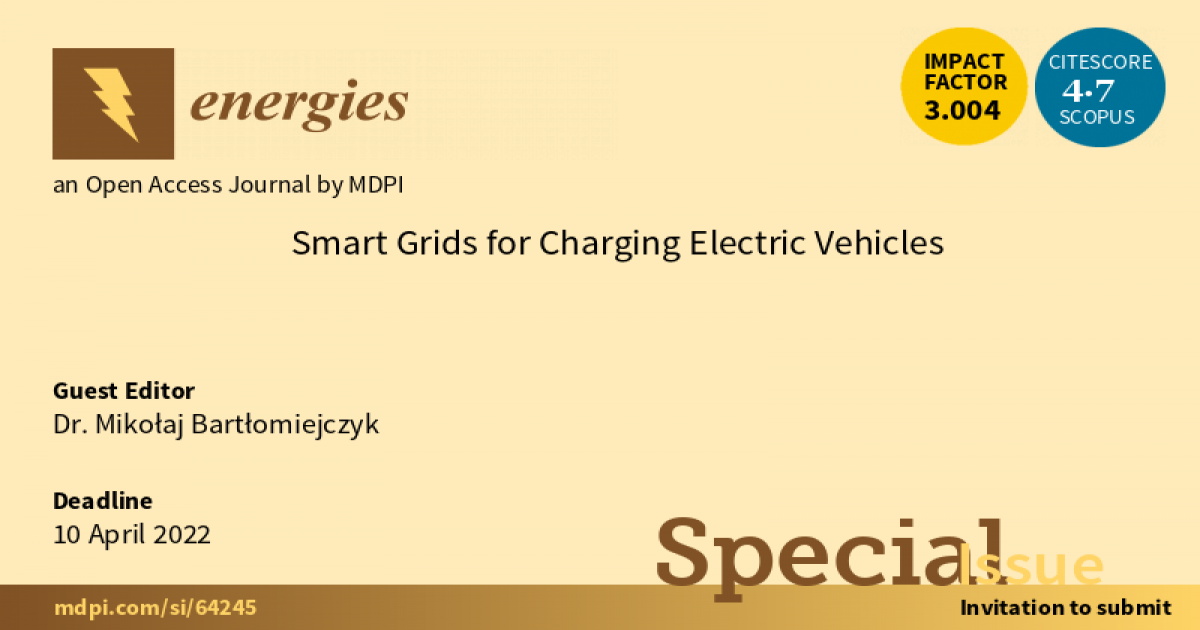Smart Grids for Charging Electric Vehicles
A special issue of Energies (ISSN 1996-1073). This special issue belongs to the section "E: Electric Vehicles".
Deadline for manuscript submissions: closed (10 April 2022) | Viewed by 10719

Special Issue Editor
Interests: electric vehicles; renewable energy technologies; energy conversion; power converters; power systems
Special Issues, Collections and Topics in MDPI journals
Special Issue Information
Dear Colleagues,
There is no doubt that at present, all of us, in one way or another, are experiencing an increasing number of issues when it comes to transportation in everyday life. This presents engineers with the need to introduce new techniques to facilitate the movement of passengers and goods. The progress of science in the field of transport engineering is focused on modern electric traction, broadly understood electromobility, and the energy efficiency of electrified transport.
The development of electromobility requires the development of infrastructure, and above all the construction of a dense network of vehicle charging stations. However, charging stations are consumers of electricity of a variable nature, which has a significant impact on the operation of the energy system. On the other hand, modern control technologies allow the vehicle charging power to be controlled and adjusted to the current state of the energy system. Vehicle-to-grid systems are also becoming more and more popular. Therefore, they require the use of smart grid technology, which is applicable in the commercial power industry. Thanks to smart grid solutions, electric transportation systems cease to be only an energy receiver and become a dynamic link of the energy system, increasing the possibility of energy flow in the supply system. An important area of infrastructure development will be the integration of various electric traction systems and local sources of electric power.
The purpose of this Special Issue is to address the advances in research related to the application of smart grid technologies for transportation electrification. We invite original manuscripts presenting recent advances in this area.
Dr. Mikołaj Bartłomiejczyk
Guest Editor
Manuscript Submission Information
Manuscripts should be submitted online at www.mdpi.com by registering and logging in to this website. Once you are registered, click here to go to the submission form. Manuscripts can be submitted until the deadline. All submissions that pass pre-check are peer-reviewed. Accepted papers will be published continuously in the journal (as soon as accepted) and will be listed together on the special issue website. Research articles, review articles as well as short communications are invited. For planned papers, a title and short abstract (about 250 words) can be sent to the Editorial Office for assessment.
Submitted manuscripts should not have been published previously, nor be under consideration for publication elsewhere (except conference proceedings papers). All manuscripts are thoroughly refereed through a single-blind peer-review process. A guide for authors and other relevant information for submission of manuscripts is available on the Instructions for Authors page. Energies is an international peer-reviewed open access semimonthly journal published by MDPI.
Please visit the Instructions for Authors page before submitting a manuscript. The Article Processing Charge (APC) for publication in this open access journal is 2600 CHF (Swiss Francs). Submitted papers should be well formatted and use good English. Authors may use MDPI's English editing service prior to publication or during author revisions.
Keywords
- smart grids
- electric vehicles
- charging stations
- electromobility
- in-motion charging
- dynamic charging
- electric buses
- energy storage system
- electric traction
Benefits of Publishing in a Special Issue
- Ease of navigation: Grouping papers by topic helps scholars navigate broad scope journals more efficiently.
- Greater discoverability: Special Issues support the reach and impact of scientific research. Articles in Special Issues are more discoverable and cited more frequently.
- Expansion of research network: Special Issues facilitate connections among authors, fostering scientific collaborations.
- External promotion: Articles in Special Issues are often promoted through the journal's social media, increasing their visibility.
- Reprint: MDPI Books provides the opportunity to republish successful Special Issues in book format, both online and in print.
Further information on MDPI's Special Issue policies can be found here.





